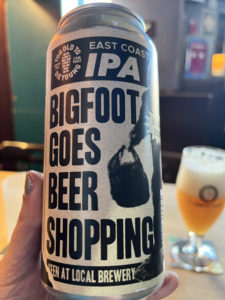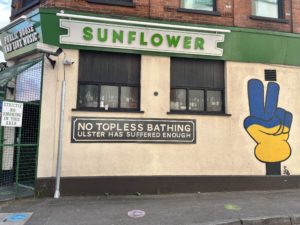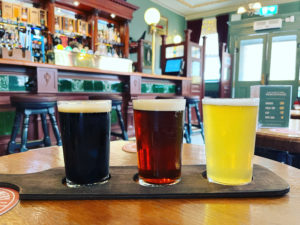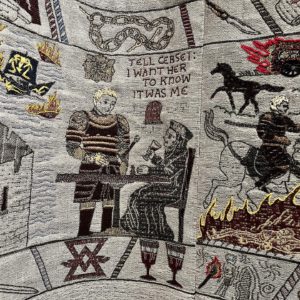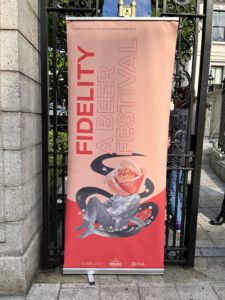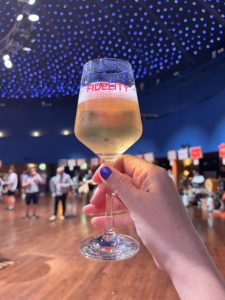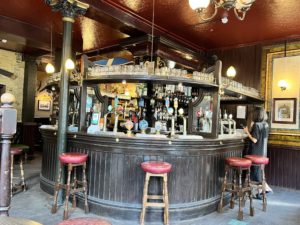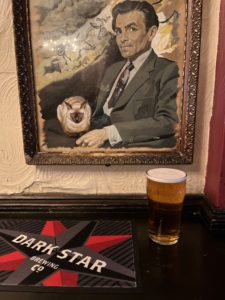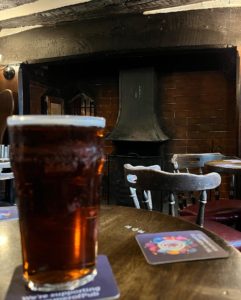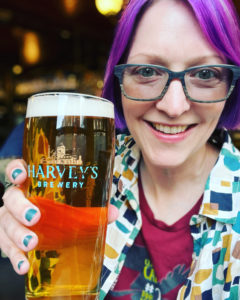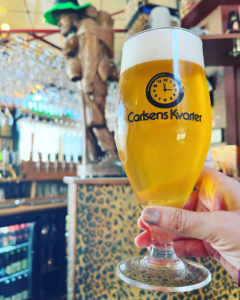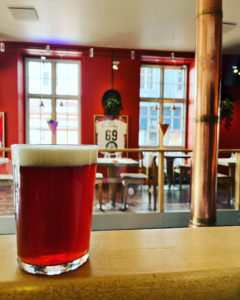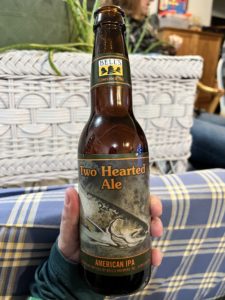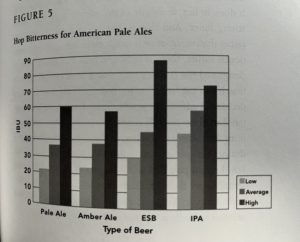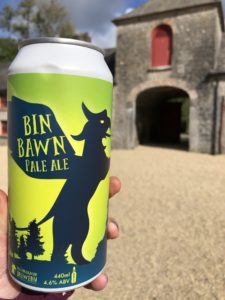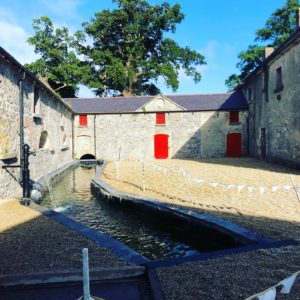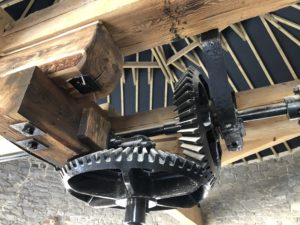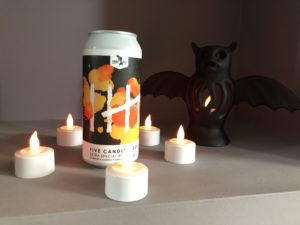 It’s that time again – the always somewhat free-form wrap-up of my favourite(u)rite beers of the year. But rather than a properly ranked top 20, it’s going to be (sort of) grouped by brewery, as for a few of them, the hits just keep coming.
It’s that time again – the always somewhat free-form wrap-up of my favourite(u)rite beers of the year. But rather than a properly ranked top 20, it’s going to be (sort of) grouped by brewery, as for a few of them, the hits just keep coming.
Lough Gill Brewery Five Candles, ESB, 5%
I love a great ESB. Bitters are very, very thin on the ground here in Ireland (and elsewhere? Who knows?), but this doesn’t stand out for its relative novelty, but because it’s simply beautifully done. It was so good, I created a summoning circle for it. More, please. Also, Lough Gill now has a series of barrel-aged beers whose art direction would totally count as using my archaeology degrees. I’ll need to track those down…in 2022.
Ballykilcavan Brewery Fresh Hop Pale Ale 2021, 5.1%
Hey, we helped pick the hops for this one! But that’s not why it made the year-end round-up (WOULD I SIMPLY PROMOTE MY OWN OLD POSTS? NONSENSE) – it really is delicious, with a nice mineral-y, earthy note and a really nice balance of malt and hops. It’s not like the fresh hopped-beers one gets in the Pacific Northwest – they are really their own breed – but it’s definitely worth seeking out every year (based on my sample size of, er, two years).
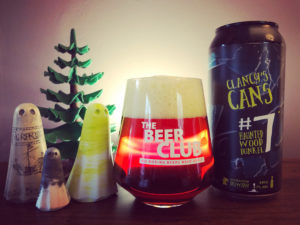 Ballykilcavan Brewery Clancy’s Cans #7 – Haunted Wood Dunkel, 4.7%
Ballykilcavan Brewery Clancy’s Cans #7 – Haunted Wood Dunkel, 4.7%
I’ve enjoyed most of the Clancy’s Cans series; I am always a fan of breweries having a fantastic core range and a fun experimental/one-off series outside that provide a bit of contrast. And that contrast doesn’t have to involve tossing in weird fruit/breakfast cereal/lactose/etc (though, in the right hands, those things can be good fun) – nailing a classic style is just as welcome. Now, everyone knows I love dark lagers – you’ll see a few more on this list – but I was so happy to get one that was not only tasty, but had a name that made me feel directly targeted; nothing beats a haunted wood. Boo!
Hope Beer Winter Seasonal Emmer Stout, 5%
We got the chance to preview this beer when we toured Hope in the autumn, and it was great to hear the backstory: the emmer is grown at Cornstown House in North County Dublin, so it’s not only hyper-local, it is part of a broader program of cultivating ancient grains, along with spelt and einkorn. Also, there are alpacas – this is an important side note – but back to the ancient grains. Cornstown House’s owner, Dominic Grayson, is growing crops that would have been familiar to Neolithic Ireland, including the aforementioned emmer wheat, as well as naked barley. He is also working in partnership with UCD’s School of Archaeology, so in addition to being an interesting stout with a difference, it *definitely* counts as using my archaeology degrees, so another box to tick.
Hope Beer Stroopwafel Stout, Imperial Pastry Stout, 9.9%
BuT yOu DoN’t LiKe PaStRy StOuTs, I hear you say – and usually, you are correct. But I do love a stroopwafel. And a stout (though not Island’s Edge – but that’s another story. And possibly not really a stout – but I digress). Putting them together to celebrate Hope’s 5th anniversary, as well as its Dutch connections, was genius. It could have gone badly wrong, but it didn’t – I just wish they had made more.
Hope Beer Bloom Gorse Infused Tripel, 8.8%
Another Hope anniversary beer, this time, with locally hand-picked gorse from Howth Head. The gorse lent an interesting botanical taste, and while I can be a bit unimpressed by some try-hard tripels, this was a treat. It was great fun to taste virtually along with the Hope team on YouTube – and props (again) to Craic Beer Community for keeping things going all year long. Keep an eye out for their Community Brew Project!
Hope Beer Limited Edition No. 24 – Bohemian Pilsener, 5%
I know, I know – Hope again! This was such a perfect beer for the summer (for those here in Ireland, OUTDOOR SUMMER, as we were encouraged to meet up outside in small groups); a letter-perfect Bohemian pilsener, did just what it said on the tin. I was sorry to see it go, and would not be mad at it re-appearing in the future.
Heaney Brewery The Echo Chamber Black IPA, 6%
I have been on Team Black IPA since Stone Sublimely Self-Righteous was just a one-off, back in the mid-2000s, and this glorious beer from Heaney really reminded me of Victory’s Yakima Twilight/Glory in the same style. Some Black IPAs/Cascadian Dark Ales (I’m not fussy about the names – well, not in this case) can have an unpleasant ashy flavour, but not this one. Also, Heaney has a stylish merch game…I eventually need to get up there and buy some things in person.
Heaney Brewery The Farmer Is The Man, Lemon Thyme Saison, 6%
Another banger from Heaney, this one apparently personally targeting me with its reference to the American folk song of the same name, though it considerably pre-dates its association with Pete Seeger. While I can’t claim the spicy, peppery character *specifically* reminded me of the Pete Seeger gig I was lucky enough to take my now-teenager to back in the day, I was happy to have the beer around as an excuse to remind him of it.
BRÚ Brewery Xtra Pale Ale, 5.7%
I was impressed by BRÚ’s revised core line this year, and was a bit worried that some of these excellent new beers and their associated branding would disappear when BRÚ and Galway Bay merge in 2022 – but I have been assured that the new recipes and BRÚ branding will live on. This is a delicious pale ale, beautifully balanced and perfect for an afternoon at the pub. I’m fortunate to have one of the BRÚ pubs a relatively short walk from home – and an even shorter walk from my fantastic hair salon, so a post-haircut pint is a must.
Galway Bay Brewing Tmavý Ležák Czech Dark Lager, 5%
Another dark lager – can’t have too many good ones, and with the aforementioned merger, perhaps it will make an appearance on one of the tap handles at BRÚ? I admit I have yet to make it to the newest Dublin Galway Bay location, the Beer Temple, but I have been lucky to find it on at other locations. Moreish.
Whiplash The Sup, Porter, 5%
I do love a good porter, and this is a good porter. There are the odd/expected Untappd comments about it being ‘just a porter’ which sounds rather like damning with faint praise, but I will take it as a win.
Whiplash Heaven Scent, Nelson Sauvin Pale Ale, 5.5%
The good people at Whiplash (now joined by our own Beer Ladies Podcast co-host, Erica, in the cellar) describe this beer as ‘utterly fantastic’ – and they are not wrong. Fresh, clean and delicious.
Whiplash Midnight Dipper Pale Ale, 5.2%
It was difficult to choose between Heaven Scent and Midnight Dipper…they were both competing for space in my fridge all summer. For someone who complains about ‘all the hazy beers’ as much as I do, I did drink a lot of this one – it’s one of those gorgeous exceptions to the rule. Or maybe I’m just wildly hypocritical. I’ll own it.
Whiplash Dark Steering, Schwarzbier, 5.2%
A Schwarzbier! From Whiplash! Yes, another Whiplash beer, but this was so tasty, I kept re-buying it every time I had the opportunity. It was a perfect beer to pair with everything from pizza to chocolate (all the best food groups) – light but ready, refreshing but ever-so-slightly chewy, and like most Whiplash cans, it had fantastic art by Sophie DeVere. I am crossing my fingers that they will release their keg-only mild somewhere I can get my hands on it…
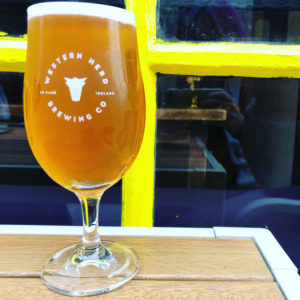 Western Herd Flora And Fauna – Strata & Nelson Sauvin DIPA, 9.45%
Western Herd Flora And Fauna – Strata & Nelson Sauvin DIPA, 9.45%
Perhaps the closest thing Ireland had to a ‘whale’ beer over the last year (though perhaps some Land & Labour beers would also qualify), this DIPA – again, not typically one of my favourite styles – won me over with its solid malt backbone and clean hoppiness. It was delicious both in cans and on tap – and it tasted even better after our trek out to the brewery in County Clare.
Lineman Sundrops Table Beer, 3.3%
At the other end of the spectrum, this perfectly-crafted low-key wonder was one of my go-tos – bursting with flavour and body for its fighting weight, it’s another beer we were lucky enough to find on tap in an actual pub when we ventured to Cork and their fantastic Bierhaus. Highly recommended.
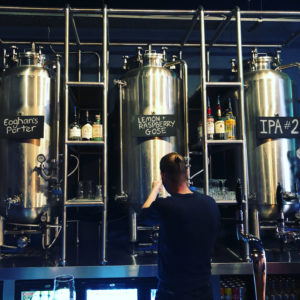
Crew Brewing Co. Berliner Berliner Weisse, 4.6%
I will be mildly controversial and suggest that Crew is the best independent brewery in the country – they are certainly the least-well-known in proportion to just how good their beers are. This is not a surprise, given that they were just getting started just as the first lockdown was doing the same, and the fact that they don’t meaningfully distribute their keg-only beer beyond Limerick. This outstanding Berliner Weisse was interesting on its own, but adding and mixing the freshly-made fruit syrups was something akin to a religious experience. In short, get yourself to Limerick…when it’s safe to do so.
Crew Brewing Co. Polly IPA, 6%
This beer began life simply as ‘IPA #2’ before earning a name, and it certainly deserves to be on regular rotation…it’s a perfect old-school IPA. Every single beer we had at Crew was revelatory – the fact that they haven’t yet featured in a Big Beery Thinkpiece on their amazing beer, inclusive, actively anti-racist environment and mix of fascinating backstories is, frankly, a crime. Here’s hoping Covid stops treating them – and the rest of us – so shamefully.
Dead Centre Brewing Sham Maths, American Amber, 6.2%
Another too-often-neglected style that ticks so many boxes – lovely and rounded, malty but not *too* malty, a bit of mineral bite and balanced hoppiness. I have yet to make it out to Dead Centre in person, but hope to rectify that in 2022 – if all goes well.
Here’s hoping for a less-pandemic-y 2022 – have a safe and healthy new year!
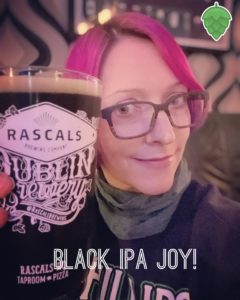 At long last, it’s time for the annual beer-y wrap-up, this time with some actual context thrown in for the casual reader. Out of consideration for your valuable time (and, let’s be real, because I haven’t had time to edit everything properly in one go), it will be broken up into multiple entries.
At long last, it’s time for the annual beer-y wrap-up, this time with some actual context thrown in for the casual reader. Out of consideration for your valuable time (and, let’s be real, because I haven’t had time to edit everything properly in one go), it will be broken up into multiple entries.